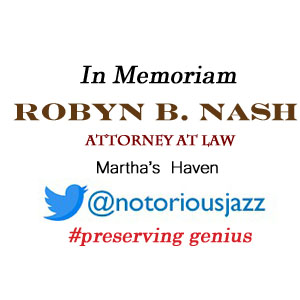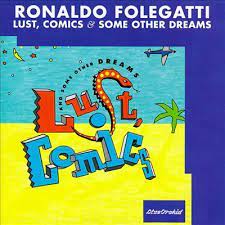
Daily Dose Of Jazz…
Ronaldo Folegatti was born on April 30, 1958 in Rio de Janeiro, Brazil and started playing the guitar at age 10. He studied mathematics and received a master’s degree in science.
When he was twenty-two, he moved to Germany and started a career in music. He released his debut album, Sound of Watercolors, in Germany in 1990. He recorded his sophomore album, Lust, Comics & Some Other Dreams, with Till Brönner and Ronnie Stevenson. The album crossed several genres including jazz, big band, free jazz, and Brazilian.
In 1995 he returned to Brazil and five years later recorded two more albums, Mazy Tales and Anjos & Estrellas. In 2005 he released Jamming! with guest appearances by Randy Brecker, Will Lee, Joel Rosenblatt, Zé Canuto, Teo Lima, Marcelo Martins, and Ada Rovatti. Composer, guitarist, and record producer Ronaldo Folegatti, who had been treated for cancer for two years, transitioned on August 1, 2007, Teresópolis, Brazil.
More Posts: bandleader,composer,guitar,history,instrumental,jazz,music,record producer
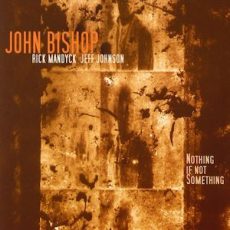
Daily Dose Of Jazz…
John Bishop was born on April 5, 1959 in Seattle, Washington and raised in Germany, Washington, D.C., San Antonio, Texas, and Eugene, Oregon. He started playing drums at the age of seven with the Patriots drum corp. Through high school and college he performed regularly and studied with Mel Brown and Charles Dowd at the University of Oregon prior to transferring to North Texas State University. A move back to Seattle in 1981 he played an extended engagement with Glider and never left.
The early Eighties saw Bishop as a member of the fusion group Blue Sky and for 20 years was a member of New Stories with pianist Marc Seales and bassist Doug Miller. They had four CDs of their own, six with the late be-bop saxophonist Don Lanphere, and a Grammy nominated recording with Mark Murphy, among others. They were a house trio for 17 years at Bud Shank’s Pt. Townsend Jazz Festival.
In 1997 John started the jazz label Origin Records, which was later named Jazzweek’s 2009 Label Of The Year, and OriginArts, a graphic design & CD production company, to help further the exposure of creative artists and their music. In partnership with his ex-drum student, Matt Jorgensen, and released over 750 recordings by 370 artists from around the world. 2003 saw them begin Seattle’s annual 4-day Ballard Jazz FestivalIn 2002 they added another jazz label, OA2 Records, a classical imprint, Origin Classical in 2008. Bishop has designed over eight hundred recording packages and multiple book covers, banners, posters, and other graphics for clients around the globe.
He has taught drums privately for 40 years, was on the faculty at the University of Washington from 2005-2009, and is presently adjunct at the Cornish College of the Arts. He regularly does drum and jazz workshops throughout the country, often with Hal Galper, including at the University of North Texas, University of Indiana, Dartmouth, Cal Arts, The New School, Purchase Conservatory-NYC, William Paterson University, University of Louisville, San Jose State University, The Jazz School- Berkeley, and Kent State University, to name a few.
He’s appeared on more than a hundred albums, and was inducted into the Seattle Jazz Hall of Fame in 2008, and named a Jazz Hero by the Jazz Journalists Association in 2019. Drummer and record producer John Bishop continues to pursue his endeavors in the industry.
More Posts: drums,history,instrumental,jazz,music,record producer
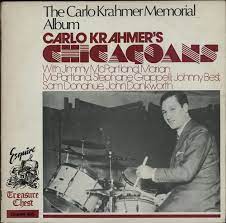
Daily Dose Of Jazz…
Carlo Krahmer was born William Max Geserick on March 11, 1914, Shoreditch, London, England. He was partially sighted at birth. He made his first record in 1939 and in the early Forties recorded with Johnny Claes’s band. He later joined Claude Bampton’s Blind Orchestra, a body sponsored by the National Institute for the Blind (now the RNIB), of which George Shearing was also a member. He worked in various bands, sometimes as leader, taking his own group to the Paris Jazz Festival in 1949.
In 1947, Krahmer co-founded Esquire Records with Peter Newbrook, a label which recorded bebop and licensed recordings from American blues and jazz labels. By 1950, Krahmer had retired from active performance, but had begun to teach aspiring drummers such as Victor Feldman.
Drummer and record producer Carlo Krahmer, whose label has continued to release music under the guidance of his wife Greta, transitioned on April 20, 1976 in London.
More Posts: drums,history,instrumental,jazz,music,record producer
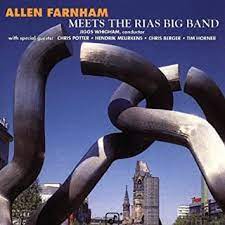
Daily Dose Of Jazz…
Allen Nicholas Farnham was born May 19, 1961 in Boston, Massachusetts and first played piano when he was 12. In 1983 he graduated from the Oberlin Conservatory of Music in Ohio.
Moving to New York City in the following year Allen freelanced before signing with Concord Records in 1986. Between 1986 and 1990 he led his own quartet, with either Joe Lovano or Dick Oatts on saxophone and Drew Gress and Jamey Haddad filling out the rhythm section and from 1990 he was pianist and music director for Susannah McCorkle.
He has produced more than fifty albums, is on the faculty of New Jersey City University and has recorded several albums under his own name. Pianist, record producer, educator, composer and arranger Allen Farnham continues to pursue all his musical endeavors.
More Posts: arranger,bandleader,composer,history,instrumental,jazz,music,piano,record producer

Daily Dose Of Jazz…
Tommy Stewart was born November 19, 1939 in Gadsden, Alabama. He attended Industrial High in Birmingham, Alabama where John T. “Fess” Whatley trained him along with Erskine Hawkins, Dud Bascomb, Paul Bascomb, and Sun Ra. Alvin “Stumpy” Robinson, the band director at Washington Jr High School, was also influential in his development.
Enrolling at Alabama State College and having no way to pay tuition, the problem solved itself when he joined the Bama State Collegians, a dance band that made enough money to fund Stewart’s way through four years of college. He attended Alabama State University, where he directed the Bama State Collegians. Later, he studied jazz arranging at the Eastman School of Music and studied arranging under John Duncan, a classical composer and teacher at Alabama State University.
As an educator he began his teaching career at Fayette High School in St. Clair County Alabama, 1961 to 1963. Moving to Atlanta, Georgia in 1969 he taught in Fayetteville, Georgia, worked for Morris Brown College doing band arrangements and taught jazz and arranged for the Morehouse College band. He also taught band classes at West End High School in Birmingham, Alabama from, and taught A Survey of Popular Music at Georgia State University.
During the 1970s, he worked with Gladys Knight & the Pips, The Tams, Johnnie Taylor, Jackie Moore, King Floyd, Z. Z. Hill, and The Stylistics. He toured as musical director for Johnnie Taylor and for Ted Taylor and went on to record disco in the Seventies with Final Approach, Cream De CoCo, Tamiko Jones, Moses Davis, and his own album.
In 1990, he co-founded the African American Philharmonic Orchestra with founder and conductor John Peek. He moved from Atlanta to Birmingham in 1992. He was a member of the Magic City Jazz Orchestra, Cleveland Eaton, the Alabama All-Stars, the Alabama Jazz Hall of Fame All-Stars, and Ray Reach and Friends, continues to be involved in music. In 1988, he was inducted into the Alabama Jazz Hall of Fame. At 81, trumpeter, arranger, composer, and record producer Tommy Stewart remains involved in the music industry.
More Posts: arranger,bandleader,history,instrumental,jazz,music,record producer,trumpet


